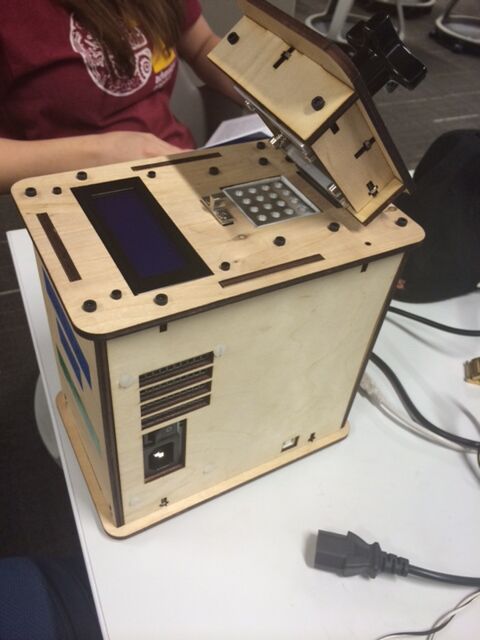BME100 s2014:W Group7 L4
| Home People Lab Write-Up 1 | Lab Write-Up 2 | Lab Write-Up 3 Lab Write-Up 4 | Lab Write-Up 5 | Lab Write-Up 6 Course Logistics For Instructors Photos Wiki Editing Help | |||||||
|
OUR TEAM
LAB 1 WRITE-UPInitial Machine TestingThis machine is called an OpenPCR and is used to replicate DNA. The machine goes through a continuous process of heating and cooling during the replication process. It contains a display screen that shows temperature of plate and lid. It also gives an estimated time of completion, the cycle it is on and the experiment it is. The DNA is placed into separate test tubes in the heating plate of the machine along with the primers and all of the other essentials for replication. It has a power cord and a USB cord that is used to connect to software on the computer that controls the experiment.
When we unplugged the display board from the sensor/processing board, the machine display board turned off. When we unplugged the white wire that connects the processing board to the heating plate, the machine's display board showed that an inaccurate temperature reading of -44℃ after unplugging the heat sensor.
The original test was ran on March 19, 2014. The machine passed the test run. After an hour and fifteen minutes and having gone through 21 of the 35 cycles, it was determined that the machine was working properly.
ProtocolsThermal Cycler Program
In the PCR reaction mix, there is Taq DNA polymerase, MgCl2, dNTP's, forward primer and reverse primer.
In the DNA/primer mix, there is a sample of the patient's DNA.
Research and DevelopmentPCR - The Underlying Technology (Add a write-up, essay-style, organized into paragraphs with descriptive headers, based on the Q&A's from Section three of your worksheet) (BONUS points: Use a program like Powerpoint, Word, Illustrator, Microsoft Paint, etc. to illustrate how primers bind to the cancer DNA template, and how Taq polymerases amplify the DNA. Screen-captures from the PCR video/ tutorial might be useful. Be sure to credit the sources if you borrow images.)
| |||||||






